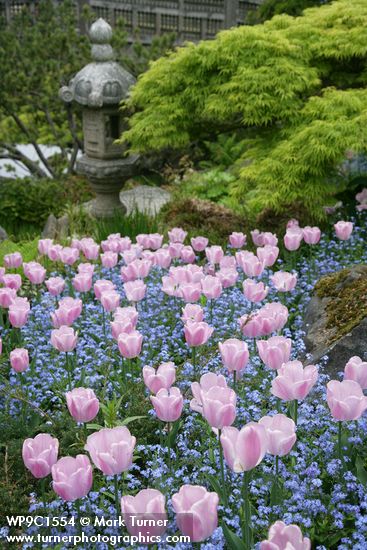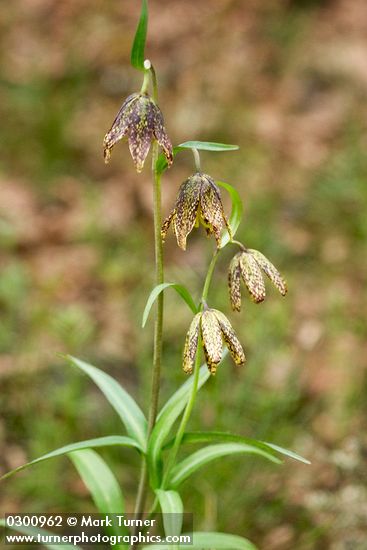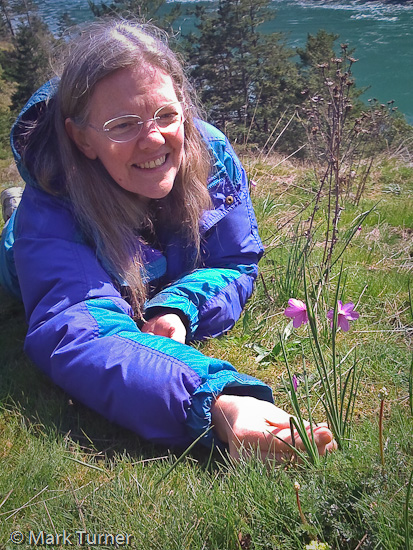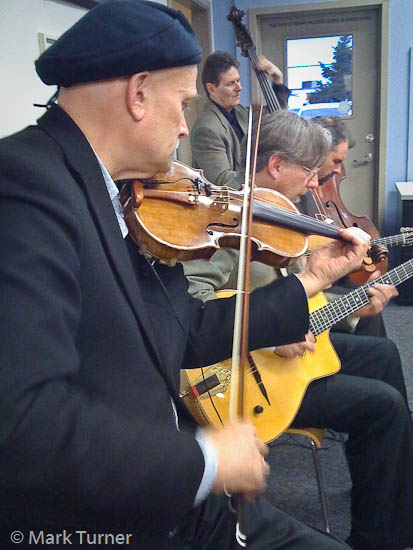Tulips are usually finished blooming around here before mid-May, but this has been a cooler than normal spring.

These pink tulips, planted with masses of blue forget-me-nots, were blooming today in Vancouver’s Queen Elizabeth Park. Other flower beds had different colors of tulips, and there were also pink and white forget-me-nots. In the small quarry garden there was a veritable river of blue surrounding one of the dwarf conifers. Upon looking closer, this sea was dotted with red-striped yellow tulips. The gunnera in the large quarry garden was bordered by purple tulips.
It was a rather dull, overcast day, ending with light rain that got progressively harder. The brilliant colors of the tulips and other flowers practically glowed in the soft light. Queen Elizabeth Park was teeming with people, most of whom were speaking languages other than English. It’s one of the more popular tourist destinations in Vancouver, but also popular with locals.
After I’d exhausted the possibilities in QE, I headed across town to VanDusen. More tulips were blooming there, as well as many of the rhododendrons along the walkway of the same name. Both gardens have Dove (or Handkerchief) Trees (Davidia involucrata) and they were at their peak bloom today. The tree gets its name from the very showy white bracts that frame the blossoms. It can be challenging to photograph because they’re hanging in the shade below the branches. Conveniently, one branch at QE was nearly at eye level and I was able to frame it against a dark conifer background.

I eventually started to get pretty wet, but finished the afternoon photographing some rather stunning clumbs of Shooting Stars (Dodecatheon meadia). This species is native to the eastern and midwestern United States and is often grown in gardens. In addition to the pinkish-purple here, they also come in near-white. This clump is particularly vigorous, obviously happy with the care the VanDusen gardeners are giving it.
I worked all day with two lenses — the all-purpose 24-105mm and the 70-200mm. Part of the time I stopped down significantly with a moderately wide lens to get maximum depth of field and other times I wanted to separate the background from the subject so used a large aperture with a long focal length. Choosing between the two techniques is really a matter of seeing the subject and thinking about the story to be told and how an editor might want to use the photo in print. There’s no magic formula, just keeping the mind open to different possibilities.
One other detail: these photos are straight from the camera with no post-processing. Breeze Browser generated the web versions from the JPEGs embedded in the Canon raw files.









 I went to the
I went to the  Toward the end of the evening Curtis & Felicity danced to one of the tunes. No one else got up to dance, although the offer was open.
Toward the end of the evening Curtis & Felicity danced to one of the tunes. No one else got up to dance, although the offer was open.